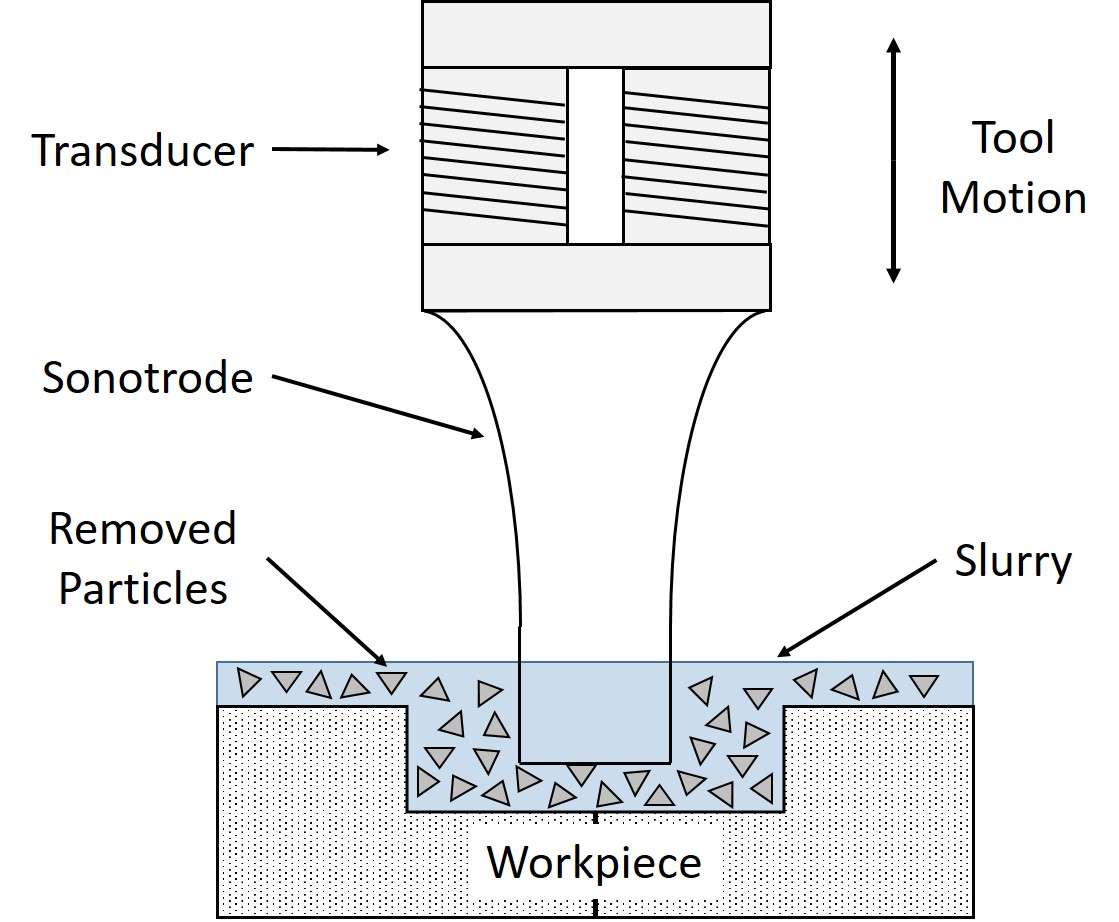Advantages and Disadvantages of Ultrasonic machining ?
Ultrasonic machining is a process that uses ultrasonic waves to cut and polish materials like metals, wood, glass and plastics. Ultrasonic machining can also be used for producing new parts from materials like rubber, leather and ceramics.
Image Source: File:Ultrasonic Machine Process.jpg – Wikimedia Commons
Advantages of Ultrasonic Machining:
- High precision – It produces the highest surface finish available in other processes.
- Low cost – Because the process uses less energy than conventional methods it consumes less power.
- High speed – It allows you to work with metals at high speeds resulting in higher production rates.
- It produces very little noise.
- It can be performed without any lubrication.
- It doesn’t use chemicals in its process.
- These machines are highly versatile so they can be easily modified for different applications such as cutting glass, plastic, ceramics, etc.
- The process creates very little heat.
- Surface quality is increased which leads to higher production rates while reducing scrap and rework costs.
- Ultrasonic machining is that it has a high surface speed, produces clean edges, and also requires less force to produce the same quality as a conventional machine. It is also cost-effective in terms of raw material and maintenance costs.
- The absence of friction also makes ultrasonic cutting ideal for applications involving plastic materials such as composites, ceramics, rubber, and glass.
- Complex geometries can be shaped.
- Products made by this method have fewer defects and yield better quality products with fewer rejects.
Disadvantages of Ultrasonic Machining:
- It cannot be used on all types of materials because some materials are brittle and break easily when they are exposed to vibrations produced by an ultrasonic machine.
- They cannot achieve the same level of accuracy as machines like CNC milling or EDM but they can still produce good quality parts
- The disadvantages of ultrasonic machining are that the cutting tool needs to be regularly replaced because they tend to wear out over time.
- There is a high risk of damage due to vibrations during production and frequent downtime due to tool replacement necessitating regular maintenance, further adding cost into the equation.
- It can damage the surface and make it look uneven or even damaged.



